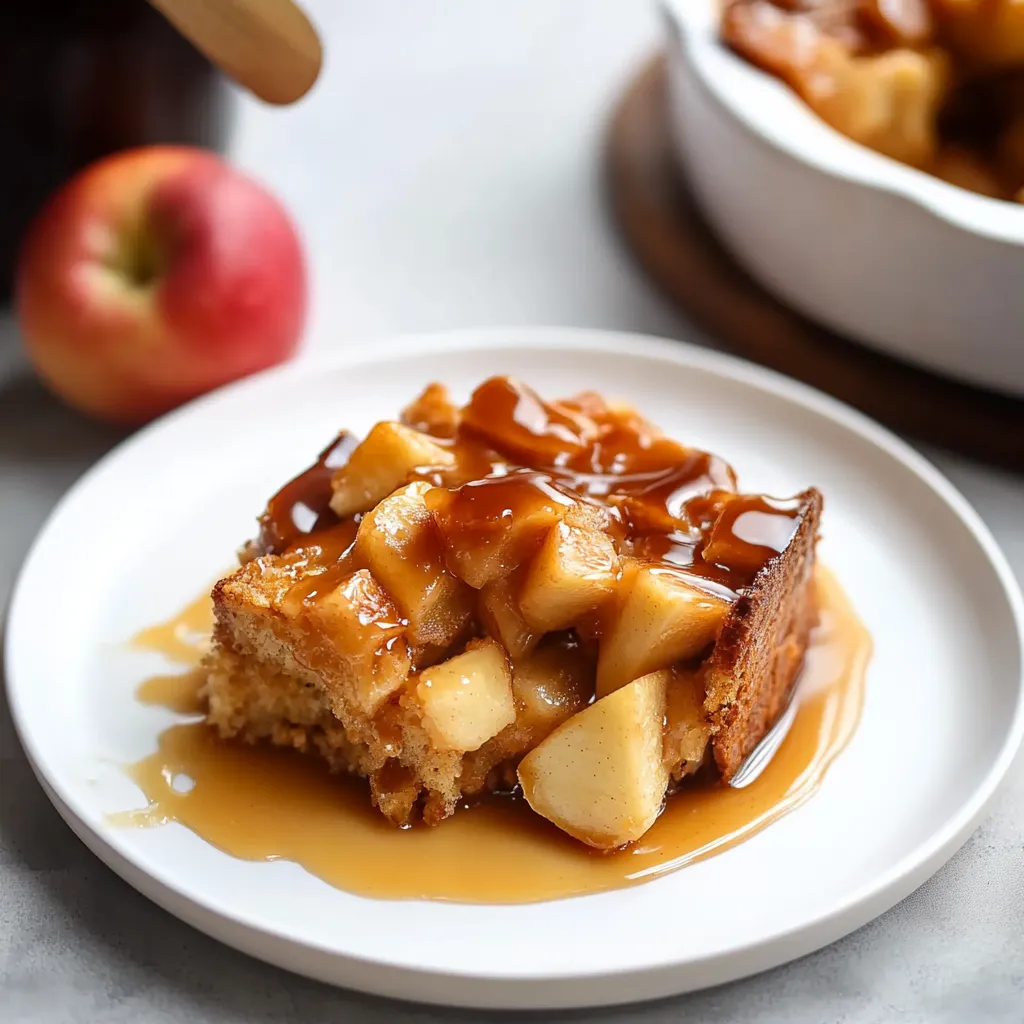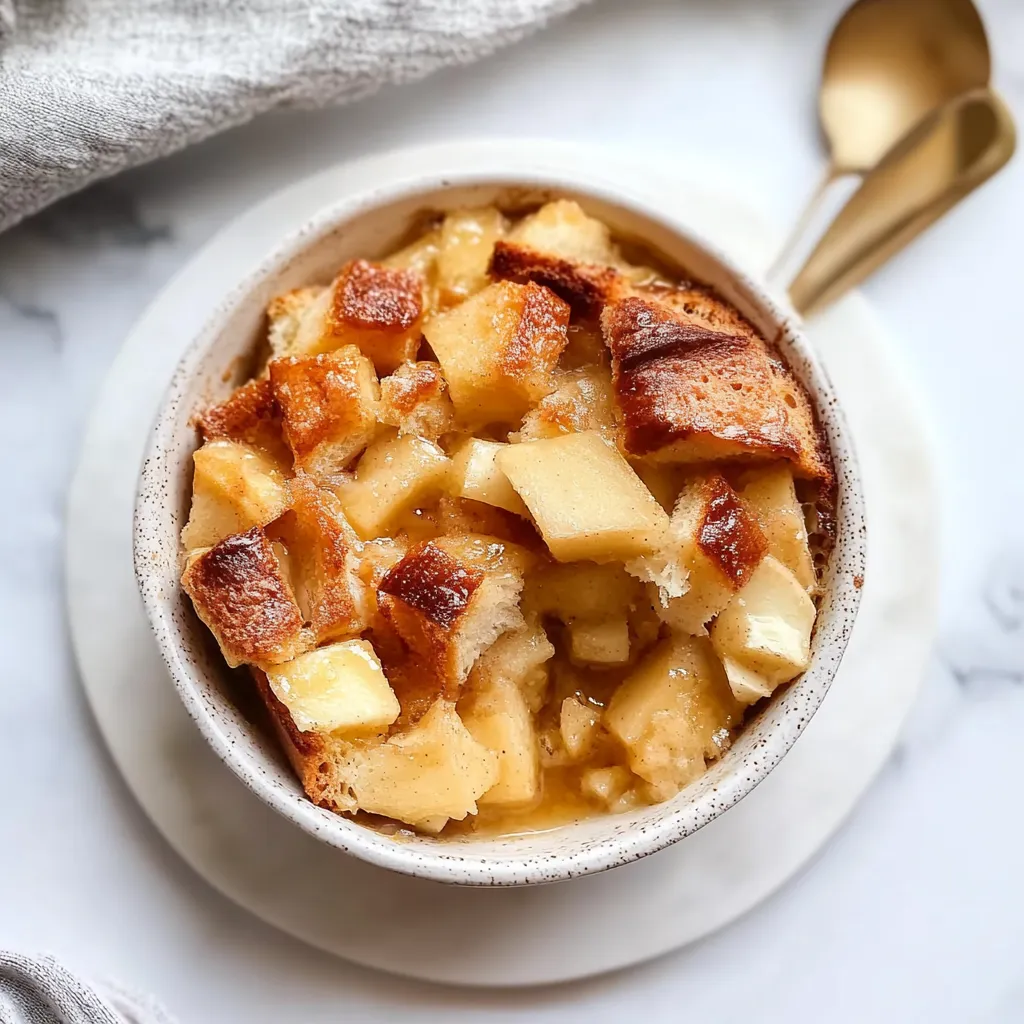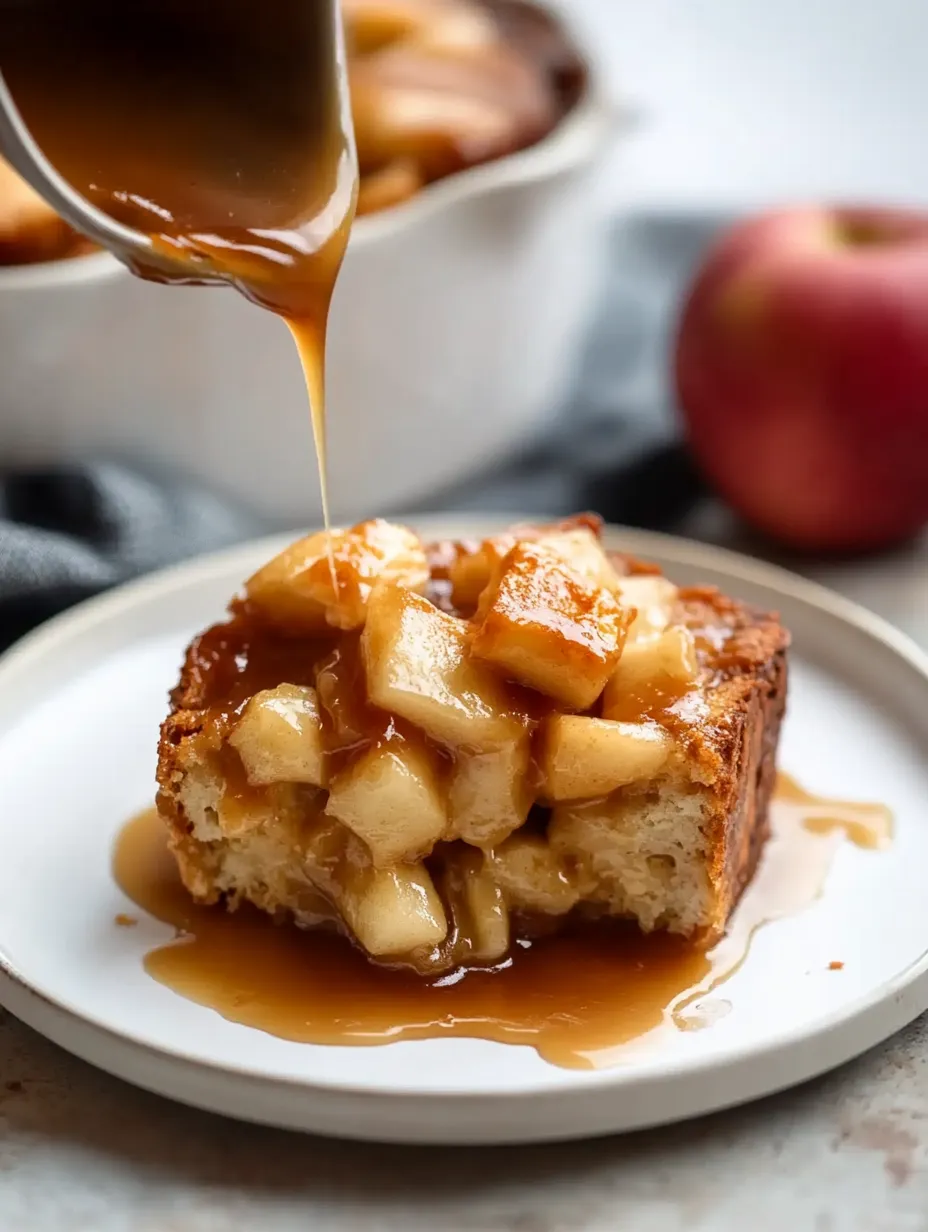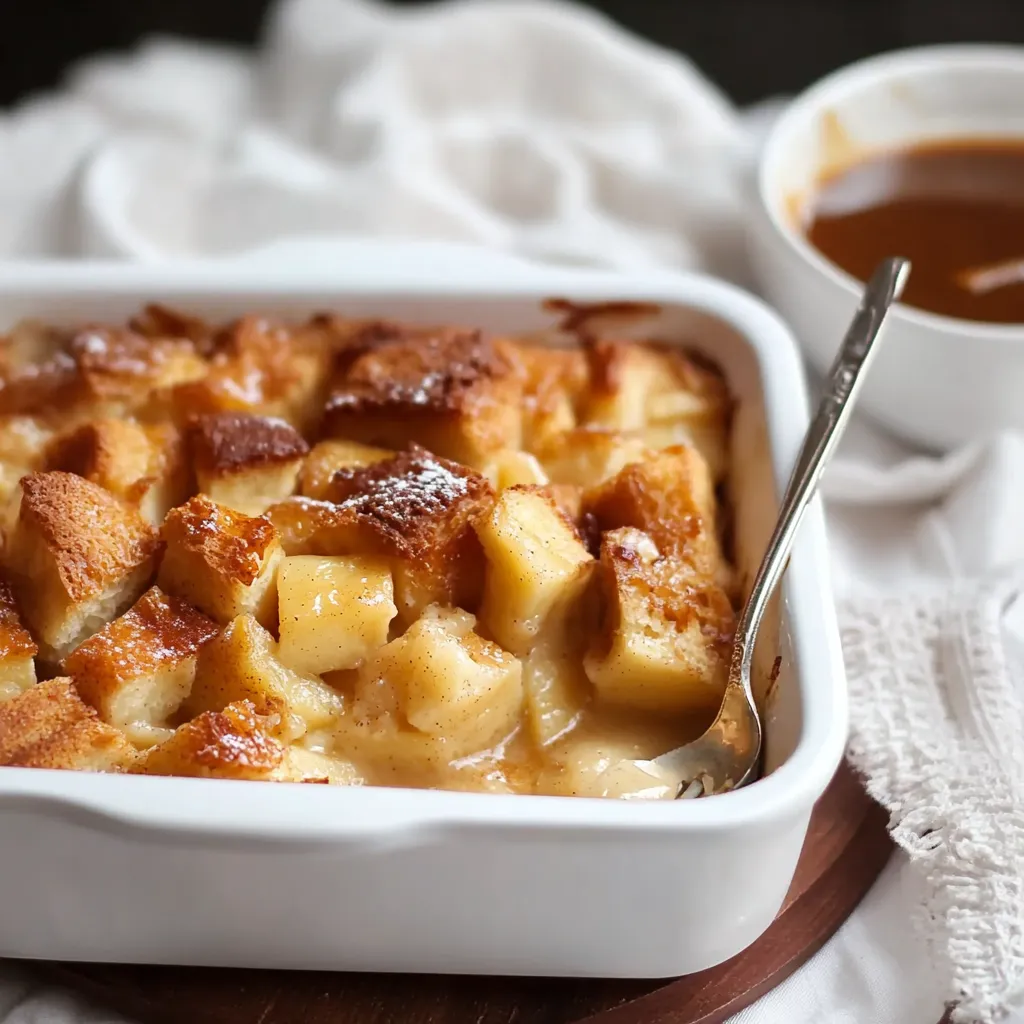 Pin
Pin
The aroma of cinnamon-spiced apples and toasted brioche baking together creates pure comfort in a dish. Through years of perfecting bread pudding, I've discovered that the magic lies not just in the ingredients, but in understanding how they transform together. Each component - from the custard-soaked bread to the bourbon-laced sauce - plays a crucial role in creating something truly memorable.
Last weekend, I served this at a fall dinner party, and the room fell silent as everyone savored their first warm, bourbon-sauced bites. The secret? Understanding how to build layers of flavor and achieve that perfect custard texture.
Essential Ingredients and Selection Tips
- Bread: Brioche or challah provide the perfect richness, while French bread offers pleasant chewiness.
- Apples: Choose Honeycrisp for sweetness and Granny Smith for tartness; they hold their shape well.
- Spices: Fresh spices, especially grated nutmeg, elevate the flavor.

Step-by-Step Creation
Begin by cutting your bread into even cubes, about an inch in size. If your bread is fresh, spread the cubes on a baking sheet and dry them in a 200°F oven for about 15 minutes - we want them dry but not toasted.

Building the Perfect Custard Base
Your custard mixture needs careful attention. Start with room temperature eggs - they'll blend more smoothly with the warm dairy. Whisk them thoroughly until they're light and uniform, then gradually stream in your slightly warmed milk and cream, whisking constantly. This careful temperature control prevents the eggs from curdling. Add your sugars and spices, watching them dissolve into the mixture.
The Art of Soaking
This is where patience becomes crucial. Place your bread cubes in a large bowl, scattering the diced apples throughout as you go. Pour the custard mixture over everything in stages, using a gentle hand to ensure even coating. That 15-minute soaking period isn't just waiting time - it's when the bread absorbs the custard, creating that perfect final texture.
Mastering the Bake
Your oven should be thoroughly preheated - place a rack in the middle position and let it heat for at least 15 minutes after it signals ready. Transfer your soaked bread mixture to the prepared baking dish, making sure the apples are evenly distributed. Some bread cubes might want to float - gently press them down so they're all nestled in the custard.
Creating the Bourbon Sauce
While your pudding bakes, prepare the crowning glory - that luscious bourbon sauce. Start with good quality butter, melting it slowly over medium heat. Add your brown sugar, stirring constantly until it dissolves completely and becomes one with the butter. The cream goes in next, creating a smooth, velvety mixture. Finally, add your bourbon off the heat - this preserves its complex flavors while cooking off the alcohol.
Understanding Doneness
The key to perfect bread pudding lies in recognizing when it's done. Look for these signs: the top should be golden brown and slightly puffed, and when you gently shake the pan, you'll see a slight jiggle in the center - like a barely set custard. A knife inserted near the center should come out mostly clean but still have a few moist crumbs clinging to it.
The Resting Period
Those ten minutes of resting after baking are crucial. The residual heat continues to cook the custard gently, while the structure sets up properly. This is also when the bourbon sauce should be drizzled on - warm enough to penetrate slightly but not so hot it breaks the delicate custard structure.
Cultural Context
Bread pudding began as a frugal dessert, a way to use stale bread rather than waste it. This version, with its rich custard, fresh apples, and bourbon sauce, shows how traditional recipes can evolve while maintaining their soul-satisfying essence. It's comfort food elevated to something special, yet still grounded in those humble origins.
Seasonal Adaptations and Variations
- Summer: Replace apples with fresh peaches or berries.
- Autumn: Add pears poached in wine or cranberries.
- Winter: Use dried fruits soaked in bourbon.
- Spring: Try rhubarb and strawberries for a lighter version.
Temperature and Texture Management
- Eggs and dairy should be at room temperature for smooth blending
- The oven must be fully preheated for proper custard setting
- The bourbon sauce needs careful heat control to prevent burning
- Let the pudding cool just enough to set but serve while still warm
Creating Special Moments
This dessert has a way of turning ordinary evenings into occasions. Serve it family-style right from the baking dish for casual gatherings, or portion it into individual ramekins for elegant dinner parties. Add a scoop of vanilla ice cream that slowly melts into the warm pudding, creating rivers of cream between the custard-soaked bread.
Kitchen Equipment Wisdom
- Baking Dish: A heavy-bottomed dish ensures even heating.
- Whisk: A balloon whisk helps create the smoothest custard.
- Serrated Knife: Makes clean bread cuts without tearing.
- Saucepan: A gentle-heating pan prevents sauce from scorching.

Weekly Meal Planning
The beauty of this pudding lies in its make-ahead potential. Prepare the bread and custard mixture the night before, covering it tightly and refrigerating overnight. Remove it from the refrigerator 30 minutes before baking to take the chill off. The sauce can be made three days ahead and gently reheated with a splash of cream to restore its silky texture.
Extended Final Thoughts
Creating perfect bread pudding is about understanding how temperatures, textures, and timing work together. Through countless iterations in my kitchen, I've discovered that success lies not just in the recipe, but in developing an intuition for how the pudding should look and feel at each stage.
Recipe FAQs
- → Can I make this without bourbon?
- Yes, substitute bourbon with vanilla extract or apple cider for the sauce.
- → What type of apples work best?
- Firm, tart apples like Granny Smith or Honeycrisp hold their shape well while baking.
- → Can I make this ahead?
- Yes, prepare and store pudding and sauce separately. Reheat before serving.
- → Why toast fresh bread?
- Toasting helps bread absorb custard better. Skip if using stale bread.
- → How do I know when it's done?
- Insert knife in center - it should come out clean, and pudding should be golden brown.
